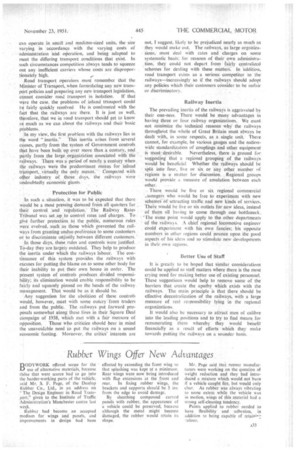Rubber Wings Offer New Advantages
Page 43

If you've noticed an error in this article please click here to report it so we can fix it.
BODYWORK offered scope for the use of alternative materials, because those that were scarce had to go into the harder-working parts of the vehicle, said Mr. S. F. Page, of the Dunlop Rubber Co., Ltd,, in art address on "The Design Engineer in Road Transport," given to the institute of Traffic Administration's Manchester centre last week.
Rubber had become an accepted medium for wings and panels, and improvements in design had been
effected by extending the front wing so that splashing was kept at a minimum. Rear wings were now being introduced with flap extensions at the front and rear. In fixing rubber Wings, the brackets and supports should be 3 iris. from the edge to avoid damage.
By sheathing compound curved panels with rubber, the appearance of a vehicle could be preserved, because although the metal might become damaged, the rubber, would retain its shape. Mr. Page said that rubber manufacturers were working on the question of weight reduction and they had introduced a mixture which would not burn if a vehicle caught fire, but would only char. As rubber was always vibrating to some extent while the vehicle was in motion, wings of this material had a strong self-cleaning tendency.
Paints applied to rubber needed to have flexibility and adhesion, in addition to being capable of retainin: -olonr.












































































